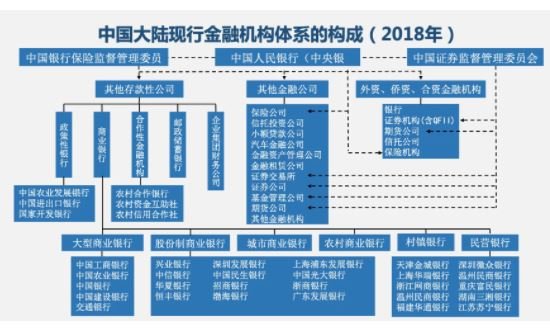外汇交易技巧实战视频(外汇交易入门视频教程)
mastering foreign exchange trading techniques: A comprehensive guide
Foreign exchange trading, commonly known as forex trading, is one of the most popular and dynamic financial markets worldwide. It involves buying and selling currencies in order to profit from price fluctuations. For those new to forex trading, it can be overwhelming, but with the right techniques and strategies, traders can navigate the market effectively and achieve long-term success. In this article, we will explore a comprehensive guide to forex trading techniques, covering essential aspects such as market analysis, transaction strategies, risk management, and emotional control. By following these tips, traders can enhance their profitability and avoid common pitfalls.
1. Understand Market Analysis
The foundation of any successful forex trading strategy lies in understanding market analysis. Traders need to analyze market trends, identify patterns, and make informed decisions based on their observations. Here are some key elements of market analysis:
Trend Identification: Trends are the general direction in which a currency pair is moving. A rising trend indicates bullish sentiment, while a falling trend suggests bearish sentiment. Traders should learn to recognize these trends through price action, candlestick patterns, and technical indicators.
Support and Resistance Levels: These are key price levels where buying or selling pressure may increase. A price bounce off a support level indicates strength, while breaking through a resistance level may signal a potential trend reversal.
Moving Averages (MA): Moving averages are commonly used technical indicators that smooth out price data to form a trend or price direction. Simple Moving Averages (SMA) and Exponential Moving Averages (EMA) are two of the most widely used tools.
Volume Analysis: Volume represents the amount of trading activity in a particular market. High volume indicates strong market sentiment, while low volume suggests a lack of interest or a potential trend reversal.
By thoroughly analyzing the market, traders can make more informed decisions and capitalize on favorable price movements.
2. Develop a Robust Transaction Strategy
A well-crafted transaction strategy is essential for maximizing profits and minimizing risks in forex trading. Traders should consider the following aspects when developing their strategy:
Market Sentiment: Understanding the current sentiment of the market is crucial. Sentiment analysis involves evaluating factors that may influence market behavior, such as economic data, geopolitical events, and company earnings reports.

Risk Management: Risk management is the cornerstone of any successful trading strategy. Traders should set stop-loss and take-profit levels to limit potential losses and lock in profits.
Position Sizing: Position sizing involves determining the appropriate lot size for each trade based on the trader's account balance and risk tolerance. This helps to manage risk across the entire account.
Transaction Size: Traders should decide whether to trade mini-lots, standard lots, or Jumbo lots based on their experience level and account size. Larger positions can amplify both profits and losses, so traders should be mindful of this.
By carefully considering these factors, traders can create a strategy that aligns with their goals and risk tolerance.
3. Master Risk Management Techniques
Risk management is the process of identifying, assessing, and mitigating potential risks in forex trading. Proper risk management can help traders avoid significant losses and protect their capital. Here are some essential risk management techniques:
Stop-Loss: A stop-loss order automatically sells a position if the price moves against the trader's position. This helps to limit potential losses.
Take-Profit: A take-profit order automatically buys back a position if the price moves in the trader's favor. This allows traders to lock in profits and realize gains.
Position Sizing: As mentioned earlier, position sizing involves determining the appropriate lot size for each trade based on the trader's account balance and risk tolerance. This helps to manage risk across the entire account.
Risk/Reward Ratio: The risk/reward ratio is the ratio of the potential profit to the potential loss of a trade. Traders should aim for a ratio of 2:1 or higher to ensure that potential profits outweigh the risks.
By implementing these risk management techniques, traders can make more informed decisions and protect their capital.
4. Control Your Emotions
Emotional control is crucial in forex trading, as the market can be highly volatile and unpredictable. Traders should be aware of their emotions and avoid making impulsive decisions based on fear or greed. Here are some tips for emotional control:
Stay Calm: Market volatility can cause traders to panic or get excited. Traders should stay calm and remain focused on their trading strategy.
Avoid Impulse Trades: Impulse trades are trades made without careful consideration, often driven by emotions. Traders should avoid making quick decisions and stick to their plan.
Set Expectations: Traders should set clear expectations for their trades and avoid chasing profits or losses beyond their risk tolerance.
By controlling their emotions, traders can make more rational decisions and avoid emotional pitfalls.
5. Continuously Learn and Adapt
The forex market is constantly changing, with new trends, regulations, and technologies emerging. Traders must stay updated on the latest developments and adapt their strategies accordingly. Here are some ways to stay informed and improve:
Follow Forex News: Stay updated on economic data, geopolitical events, and central bank announcements. These events can have a significant impact on currency prices.
Use Technical Indicators: Technical indicators such as RSI, MACD, and Bollinger Bands can provide valuable insights into market trends and potential price movements.
Join Trading Communities: Joining online forums, social media groups, and trading communities can provide valuable insights and tips from experienced traders.
Practice and Experiment: Traders should practice trading on demo accounts and experiment with different strategies to find what works best for them.
By continuously learning and adapting, traders can improve their skills and achieve long-term success.
6. Summarize and Reflect
In conclusion, forex trading is a complex and dynamic market that requires a combination of technical skills, strategic thinking, and emotional control. By understanding market analysis, developing a robust transaction strategy, implementing proper risk management techniques, controlling emotions, and continuously learning and adapting, traders can enhance their profitability and achieve long-term success. Remember, forex trading is not about getting rich overnight, but about building a solid foundation and staying disciplined in the journey.
本文来源:本站责任编辑:
【温馨提示】转载请注明原文出处。 此文观点与零零财经网无关,且不构成任何投资建议仅供参考,请理性阅读,版权归属于原作者,如无意侵犯媒体或个人知识产权,请联系我们,本站将在第一时间处理。零零财经对文中陈述、观点判断保持中立,不对所包含内容的准确性、可靠性或完整性提供任何明示或暗示的保证,请读者仅作参考,并请自行核实相关内容。














客户对我们的评价
外汇交易来自郑州的客户分享评论:
炒外汇投资 来自福州的客户分享评论:
股指外汇交易 来自南宁的客户分享评论:
止损的原则是"一次赚的要够赔三次。"为什么要定这样一个原则,其实道理很简单,因为我不可能百分之百选对上涨的股票,因此,在选错股票时,必须防止股价下跌对既得利润和本金的侵蚀。
采用该原则时,只要我的选对率在25%以上就可以轻松实现资金的增值,而25%的准确率对于很多投资者来说是可以达到的。然后在该原则下,我设定每次赚钱时的小获利率为10%,顺势得出每次的大赔率不应超过3.3%,当亏损大于这一比例时,立刻止损卖出。最后还必须将该方法与形态分析相结合,在